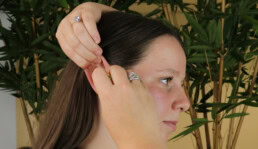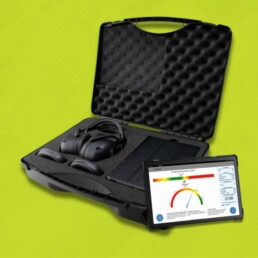Hearing protection fit testing is a method used to determine if the earplugs or earmuffs used provide sufficient protection against harmful noise levels. This ensures that the chosen hearing protection fits the user properly and achieves the expected noise reduction, creating a safer work environment and meeting legal and regulatory standards.
The harmonised WHS Regulations dictates that when providing PPE to workers, employers are required to ensure that they are the correct size, fit and workers are trained in its use. While for most PPE the correct size and fit are easy to establish, it is not the case with earplugs. Some common causes of poor earplug fitting are:
- Different ear canal shapes and sizes:
Ear canal size and shape vary as much across the population as any other part of the human body. Sometimes, each ear canal on either side of an individual can also vary in size and shape. This means that offering one type or size of earplug will exclude many workers from achieving the required protection from workplace noise. For example, workers with ear canals that are larger than the earplug being worn will have a leak path between the earplug and the ear canal. This means these workers will be unknowingly constantly overexposed to noise. Similarly, workers with smaller ear canals will find wearing regular-sized earplugs difficult and uncomfortable.

- Lack of training provided to the wearer on how to use them correctly:
WHS Regulations require employers to train their workers on how to correctly fit their PPE. Many workers do not insert earplugs sufficiently deep into their ear canals to achieve the required protection from noise due to lack of training.

The need for hearing protection fit testing
SLC80 – gives average results only
The SLC80 rating is a standardised method of measuring the expected reduction in noise provided by a hearing protection device as per AS/NZS1270:2002. This test is conducted on naïve test subjects and is calculated by considering the average of the results from the test subjects. As a result, it is not a guarantee of adequate fit for every individual.
Audiometric testing: it is a reactive measure which only helps identify permanent loss once it has occured
Audiometric testing is conducted at regular intervals to monitor a worker’s hearing health. The test is designed to show any potential hearing loss over certain frequencies for an individual. If hearing loss is discovered, the intention of the test is to serve as a catalyst to introduce more preventative methods to reduce any further hearing loss. As a result, audiometric testing is only a reactive method to improve hearing health and does not help in determining the right hearing protection for the worker and preventing the hearing loss in the first place.
Since how well earplugs fit inside a worker’s ear canal is impossible to determine visually, there is a need for a method to quantitatively determine how much protection a worker receives when wearing their earplugs. This can only be done with a hearing protection fit-test system such as the uvex xact-fit test which can test almost any earplug in the market.
uvex xact-fit test system
uvex xact-fit test system is a cloud-based hearing protection fit testing system by uvex that uses Real Ear Attenuation at Threshold (REAT) method to test hearing protection level. uvex xact fit test is easy to operate and takes only 2 to 5 minutes to test one person. Aside from serving as an educational tool for workers on how to insert earplugs properly, the results from the uvex xact-fit test system can also be used as evidence by employers of having fulfilled their obligations as per the WHS Regulations. Contact us for more information about uvex xact fit test system and to speak to our hearing protection specialist.
